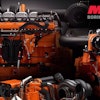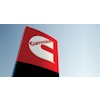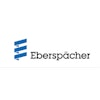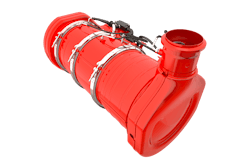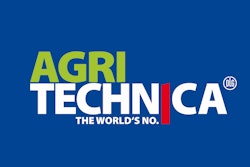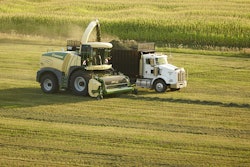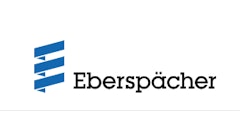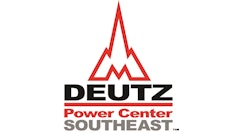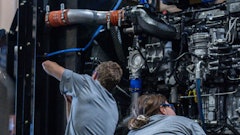The introduction of Stage V in 2019, details of which are likely to be ratified in early 2016, promises to pose new challenges for OEMs, particularly those who use engines in the 19 to 560 kW range. However, Perkins is well positioned to not only supply Stage V engines but to help OEMs manage the transition from Stage IV to Stage V.
Subject to ratification, the biggest impact of Stage V will be the introduction of a particle number (or PN) limit for all engines in the 19 to 560 kW power band. This is similar to that which already applies for equipment used on construction sites in Switzerland.
Whilst the proposed regulation does not mandate a specific technology to comply with the proposed PN limit, as with Euro VI on-road trucks, it is anticipated that this will result in the widespread application of diesel particulate filters (DPFs) on off-highway equipment across the power range to which the PN limit applies. This is a technology with which Perkins has considerable experience, having used it for many engine models from Stage IIIB onwards.
While common rail fuel systems and exhaust aftertreatment have already been incorporated on many large machines, the biggest challenge will come on some smaller machines between 19 and 37 kW, many of which will be requiring common rail fuel systems and exhaust aftertreatment for the first time.
Some of these machines are extremely compact so packaging could be a challenge. “By working closely with OEMs we have been successful in identifying solutions to aftertreatment packaging so, we are confident that we can help OEMs overcome these challenges,” says Oliver Lythgoe, Product Concept Manager.
“Emissions, however, should not be the sole focus: our OEM customers must design and sell machines that are productive, reliable and good value, providing their end customers with the best total owning and operating costs. You can't do that by simply focusing on meeting emissions alone. By working together with OEMs, on machine and engine integration, Perkins can help manufacturers differentiate their products in the market while ensuring that equipment remains easy to operate.”
He continues, “Many Perkins products are ready for Stage V as proposed, and eight different models have already been introduced into series production meeting the proposed level of particle number. These are powering some of the latest equipment to be launched by OEMs including excavators, wheeled loaders, telehandlers and forklifts.
“Whilst some manufacturers are relatively new in their experience with particulate filters, we are familiar with all the required technologies having successfully used them in production engines running in harsh field conditions. Not only are we ready today, but we plan to introduce other non-emissions improvements, for example improved power density, that will positively impact the customer’s owning and operating costs – both before EU Stage V in 2019 and beyond.”
Furthermore, Lythgoe argues that there is a bigger picture with which to contend. While Stage V is just about Europe, there is growing global complexity with multiple emissions standards around the world. For example, there are highly regulated regions such as Europe, US/Canada, and Japan that are subject to Stage IV/U.S. EPA Tier 4 Final and other regions such as China and India to name a few which are currently working to Stage IIIA/Tier 3 equivalents. Starting in 2022, it is likely that there will be at least five different, distinct levels of emissions standards in the world.
For OEMs to exploit these markets without excessive machine variety, they must look at ‘tierable’ solutions for their machines, an area in which Perkins has considerable experience with its ‘world’ engine concept, namely a common core with the appropriate aftertreatment technology applied.
The proposed introduction of Stage V emissions standards in 2019 might seem a long way off but Perkins is urging machine OEMs to start their journey now. There are many issues to consider and a timely consideration of those issues will result in the best possible outcome. It says 2015 and to some extent 2016 should be a time of strategic planning for OEMs. They need to consider their future range additions and rationalizations, which territories they wish to serve, sources of differentiation, and the resources they will need to implement a variety of solutions. “Perkins, as a global full range engine supplier, is ready to provide OEMs with the inputs they need,” concludes Lythgoe.
